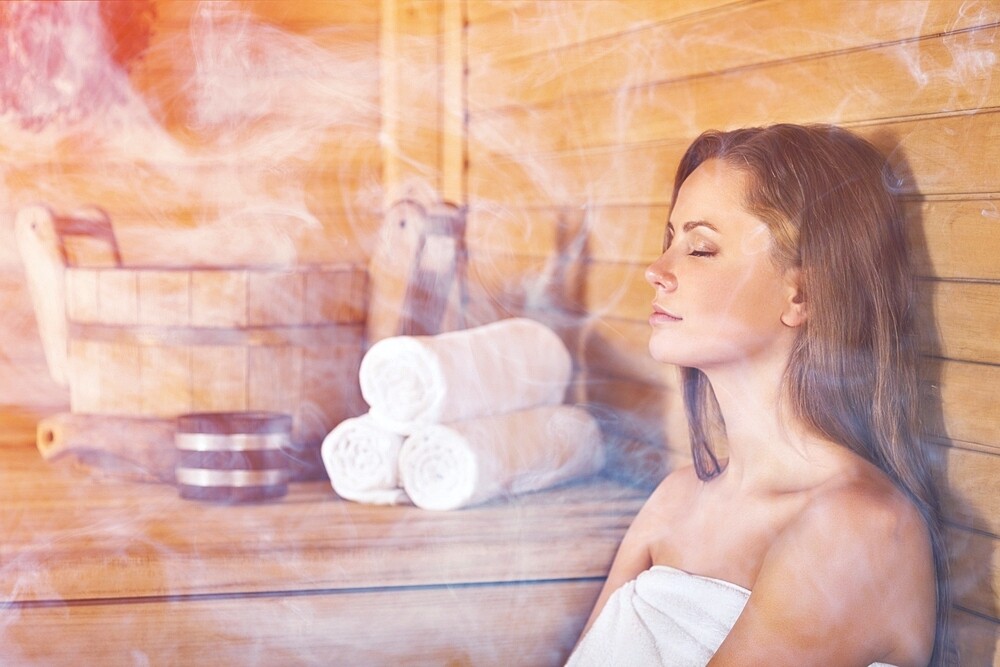Can I go to the sauna if I have a cold? Is it possible to sweat out the pathogens? You can find out here what is good and what you should better avoid.
Sauna for colds: Yes or no?
Your throat scratches, your nose runs and you feel tired and exhausted? Now quickly to the sauna and sweat out your cold … or? This is unfortunately a fallacy, because viruses cannot be sweated out. In addition, your cardiovascular system is stressed by the change between cold and heat – but your immune system is already weakened, and going to the sauna is an additional burden. Your body needs all its energy to fight off the viruses that cause colds – which is why having a sauna is a bad idea when you have a cold! And if you have a fever, the sauna is off limits (so you can really take your temperature)! So: Better to go to bed and get well instead of going to the sauna to sweat.
And sauna at first cold symptoms?
So if the cold or flu has already hit you, it is better not to go to the sauna again. But what about the first symptoms? Some people experience that a visit to the sauna cures the cold at the first signs. But you should be careful! The opposite effect can also occur, so the cold can get worse. In case of doubt, it is better to do without the sauna. Even when your cold has subsided, you should wait until the cold, cough and the like are completely gone before you become a sauna-goer again. Wait a few days after the symptoms have subsided and start with a bio-sauna or soft sauna. There, the temperature is between 50 and 60 degrees Celsius, whereas in the classic Finnish sauna it is between 80 and 100 degrees. This is good for your circulation in the beginning until you are really fit again.
I prefer not to use the sauna when I have a cold – but can I at least prevent it?
Whoever goes to the sauna does something good for their health. A visit to the sauna is good cardiovascular training, strengthens the immune system and relaxes the muscles. In addition, saunas improve the skin’s appearance, as the skin is better supplied with blood and oxygen. Some studies in Finland have shown that respiratory diseases or colds can be prevented by taking a sauna regularly. In order for the health benefits to be effective, it is important to go to the sauna regularly: The effects of the sauna diminish after about eight to ten days and need refreshing. However, a single visit is not enough to prevent colds and the like: the benefits only occur if you take a sauna regularly over a longer period of time. You should go to the sauna about once a week – and that for at least three months.
That’s the way to do it!
You don’t know how to proceed with your sauna visit? We’ll show you how to do it.
- At the beginning you should take a shower to flush the body fat from the skin, which can hinder sweating. If you are wearing make-up, remove it before you shower. Dry yourself well. Now you can start your first sauna session. This should be between eight and 15 minutes – but remember to pay attention to your body feeling! If it gets too much for you, go out earlier. Either sit the whole time or lie down and sit down for the last two minutes or so to get your circulation used to the upright position.
- The first step after taking a sauna is to get fresh air, which is important for cooling the respiratory tract. After a few steps outside, the second cooling down takes place with cold water. If you like, you can then go into the cold water plunge pool.
- This is followed by a warm footbath – which is especially important after the last sauna session in order to avoid heavy post-sweating.
- After a short rest you can take the next sauna session. Three sauna sessions are usually enough to achieve health benefits.
Note: If you have problems with your heart, you should talk to your doctor beforehand about whether and how you can take a sauna.
What actually happens in a sauna?
The body reacts to the heat in the sauna: the skin temperature rises by about 10°. In the body, the blood vessels of the skin dilate, the blood circulation of the skin intensifies and the heat reaches the core of the body. The internal body temperature is about 37° and is now increased to 1 to 2°. However, the body tries to maintain the normal value, the production of sweat begins: if the sweat evaporates on the skin, heat is withdrawn from the body. During the subsequent cooling process, the skin temperature drops again, the arteries of the skin narrow and the blood flows into the body to maintain the heat. The body thus tries to counteract the heat loss. With a subsequent foot warming bath, the blood vessels are dilated again.

